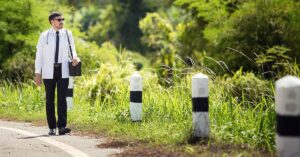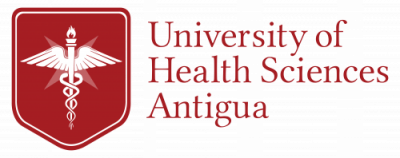
YOU CAN MAKE A DIFFERENCE IN A RURAL COMMUNITY
Many years ago, as some of you already know, I worked in a rural area in the intermountain northwest. We provided 911 services, as well as a small primary care clinic. We were literally the only providers in an area the size of Rhode Island. It didn’t matter if there was a blizzard or a flood, if someone needed us, they either made their way to our small clinic or we went to them in the ambulance. We were dedicated to the lives of our patients, because we knew they had no one else.
Because our operation was small, and most of us did not live in the community we served, there were times when there was no medical coverage for this area. That meant that pregnant women, children with fevers, diabetics who needed their medications refilled, accident victims and more had to drive 1.5 hours to the nearest hospital and clinic. And that was in good weather. During the winter, when the snow average yearly snowfall could top 96 inches, the roads became impassible. If there were no providers on-site, then people went without care.
Providing care in such a community was a thrilling experience. Because backup was so far away, you had to be at your best when it came to diagnosis and treatment. In good weather, you could always call on the helicopter to get an urgent patient out. But most of the time, our patients weren’t urgent – they were the regular types of cases you would see in a small community practice. Bumps and bruises, sore throats, coughs, chronic illness management, and the like. It was a fantastic way to serve the community.
But at the same time, we were often overworked, understaffed, and had few of the resources we needed to provide care to a community that was relatively poor both in terms of their health and economic status. And the community I worked with is not unique. Across the United States, there are thousands of similar communities where people are sick and in need of good doctoring, but there simply are no doctors.
RURAL MEDICAL SHORTAGES
While 20% of Americans live in rural and remote communities, only 11% of physicians practice in these communities. While urban areas see 31.2 physicians per 10,000 residents, rural areas have only 13.1 per 10,000. When you look at specialist in rural communities, the disparity becomes even more stark. Urban areas have 263 specialists per 100,000 people, while rural areas have only 30 per 100,000 people. This means that rural residents who need specialist medical care, such as an endocrinologist for diabetes, or an oncologist for cancer, simply do not have access to the doctors they need. They must often times drive hours to see these doctors.
The lack of physicians is deeply worrisome. That’s in part because rural residents are more likely to die from health issues like cardiovascular disease, unintentional injury, and chronic lung disease than city-dwellers. Rural residents also tend to be diagnosed with cancer at later stages and have worse outcomes.
Physicians who practice in rural America tend to be older as well. By 2030, it is estimated that 25% of those currently in practice will retire. Most medical school graduates choose not to practice in rural areas. While matriculation to US medical schools rose by 30% in recent years, the number of students coming from rural communities was only 4.3% of entering classes. This is important because those who come from rural communities are more likely to return.
EMBRACING RURAL PRACTICE
The largest deficit of providers in rural communities are those who work in primary care. This includes mainly family physicians, internists, pediatricians, and to a lesser extent psychiatrists, obstetricians/gynecologists, and general surgeons.
Family physicians provide the bulk of care in small communities, and because of their depth of cradle to grave training, where they can deliver a baby in the morning, do minor surgery in the afternoon, see a geriatric patient in the nursing home before heading home for the day, and return on call in the night to attend an accident victim in the emergency room, they are uniquely prepared to practice in rural communities.
Recognizing this, there are special rural training track family medicine residency programs that prepare doctors to practice family medicine in rural environments. These rural training tracks are located in rural communities. Residents often spend the first year of their training in a large city where they learn inpatient and intensive care skills before moving to the rural community where they spend the remaining two years.
Because these rural communities do not have a large number of medical students, and residents from many different specialties, rural family medicine residents receive a wealth of training. Whether it is learning how to do endoscopy or a C-section, rural training track graduates report they feel confident to handle almost anything that comes their way.
Rural training tracks also tend to be easier to match into, which is a real draw for foreign medical graduates.
In addition to the breadth and depth of experience, physicians working in rural communities state that they feel more job satisfaction than their urban colleagues because they can practice a wide range of medicine. Additionally, they tend to feel a closer connection to the communities they serve. In essence, they become a living, breathing part of the community where they can be a big fish in a little pond.
To explore rural training tracks across the United States, please visit The RTT Collaborative.
LOAN FORGIVENESS AND MORE FOR RURAL PRACTICE
In addition to being able to practice full-scope medicine in a community where you feel you truly belong, there are other benefits to rural medical practice. One of the most enticing for new physicians is loan forgiveness.
The National Health Services Corps (NHSC) Loan Repayment program means that those who practice in eligible rural communities can receive up to $100,000 USD of loan repayment on loans that qualify.
In addition to this federal program, most states also have loan forgiveness programs that can add to the NHSC loan forgiveness.
Many rural hospitals also sponsor their own loan forgiveness programs that can be combined with state and NHSC loan repayment programs. These rural hospitals often times will also pay to set up recent graduates in practice in their community, paying their office startup costs, staff, malpractice insurance and more.
To learn more about loan repayment, and to explore current rural medical jobs, visit the 3RNet site.
READY TO START YOUR CAREER AS A RURAL PHYSICIAN?
We know what it takes to be a doctor. We are the second oldest private medical university in the Caribbean, producing physicians for the world since 1982. If you have always dreamed of being a physician, helping those in need, and earning the respect of your community, then UHSA is right for you.
ACCELERATED PREMEDICAL PROGRAM
If you are a high school graduate, or a university graduate who lacks the premedical pre-requisite courses, why not join our premedical program? It will give you all the credits you need to be promoted to our world-class MD program.
If you are a university graduate who has the premedical pre-requisites, then look at direct entry into our MD program, where you will learn to be not only a physician, but a healthcare leader.
EARN YOUR MD AND MASTERS OF PUBLIC HEALTH (MPH)
If you want to work in in global health, or just want to expand your understanding of the role of public health and prevention while also enhancing your career prospects, then our joint MD/MPH program is right for you.
We would love to have you join the UHSA family! Please contact our Admissions Team to learn more about living your dream with UHSA family.

